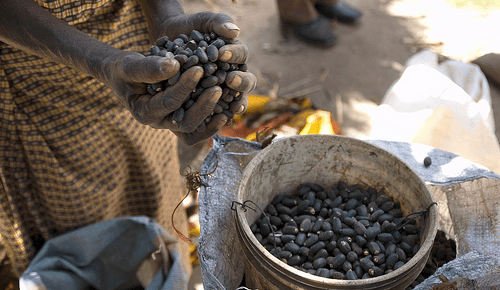
I biocarburanti sono considerati una fonte di energia alternativa amica dell’ambiente e del clima. Tuttavia, la loro sostenibilità ambientale è sempre più controversa e messa in discussione, a causa della competizione per il suolo con la produzione alimentare, dei bilanci negativi di carbonio e degli impatti sulla biodiversità.
Le zone aride e semi-aride sono state proposte come un’alternativa più sostenibile, priva di tali impatti.
In un nuovo articolo pubblicato di recente sulla rivista Journal of Arid Environments, un gruppo di scienziati (tra cui figura anche il ricercatore del CMCC Antonio Trabucco della Divisione IAFENT) ha valutato il bilancio di carbonio che si avrebbe dalla potenziale conversione del suolo per la coltivazione di Jatropha, la produzione e l’utilizzo di biocarburanti in regioni aride e semi-aride. Sono stati valutati anche i debiti di carbonio dovuti alla conversione dei suoli, e le corrispondenti rese agricole minime di Jatropha necessarie a ripagare il debito in 15 o 30 anni.
I risultati hanno evidenziato come i cambiamenti di uso del suolo legati alla produzione di biocarburanti generino dei debiti di carbonio. In particolare, per quanto riguarda la coltivazione di Jatropha in aree aride o semi-aride, questo non accade quando la conversione riguarda terreni agricoli (ma si hanno degli impatti per quanto riguarda la produzione alimentare) o marginali, mentre accade per macchie e foreste. Per ripagare il debito di carbonio dovuto alla conversione di un territorio arbustivo occorrono circa trent’anni e alte rese (3,5 – 3,9 t di sementi per ha-1/anno), mentre per quanto riguarda la conversione delle foreste delle zone aride in coltivazioni di Jatropha, il debito non può essere compensato nel tempo di una generazione umana.
L’abstract dell’articolo:
Biofuels are considered as a climate-friendly energy alternative. However, their environmental sustainability is increasingly debated because of land competition with food production, negative carbon balances and impacts on biodiversity. Arid and semi-arid lands have been proposed as a more sustainable alternative without such impacts. In that context this paper evaluates the carbon balance of potential land conversion to Jatropha cultivation, biofuel production and use in arid and semi-arid areas. This evaluation includes the calculation of carbon debt created by these land conversions and calculation of the minimum Jatropha yield necessary to repay the respective carbon debts within 15 or 30 years.
The carbon debts caused by conversion of arid and semi-arid lands to Jatropha vary largely as a function of the biomass carbon stocks of the land use types in these regions. Based on global ecosystem carbon mapping, cultivated lands and marginal areas (sparse shrubs, herbaceous and bare areas) show to have similar biomass carbon stocks (on average 4–8 t C ha−1) and together cover a total of 1.79 billion ha. Conversion of these lands might not cause a carbon debt, but still might have a negative impact on other sustainability dimensions (e.g. biodiversity or socio-economics). Jatropha establishment in shrubland (0.75 billion ha) would cause a carbon debt of 24–28 t C ha−1 on average (repayable within 30 year with yield of 3.5–3.9 t seed ha−1 yr−1). Land use change in the 1.15 billion ha of forested area under arid and semi-arid climates could cause a carbon debt between 70 and 118 t C ha−1. This debt requires 8.6–13.9 t seed production ha−1 yr−1 for repayment within 30 years. If repayment is required within 15 years, the necessary minimum yields almost double. Considering that 5 t seed ha−1 yr−1 is the current maximum Jatropha yield, conversion of forests cannot be repaid within one human generation. Repayment of carbon debt from shrubland conversions in 30 years is challenging, but feasible. Repayment in 15 year is currently not attainable.
Based on this analysis the paper discusses the carbon mitigation potential of biofuels in arid and semi-arid environments.
Leggi la versione integrale dell’articolo:
Achten W. M. J., Trabucco A., Maes W. H. , Verchot L. V., Aerts R., Mathijs E., Vantomme P., Singh V.P., Muys B.
Global greenhouse gas implications of land conversion to biofuel crop cultivation in arid and semi-arid lands – Lessons learned from Jatropha
2013, Journal of Arid Environments, Pages 135-145


